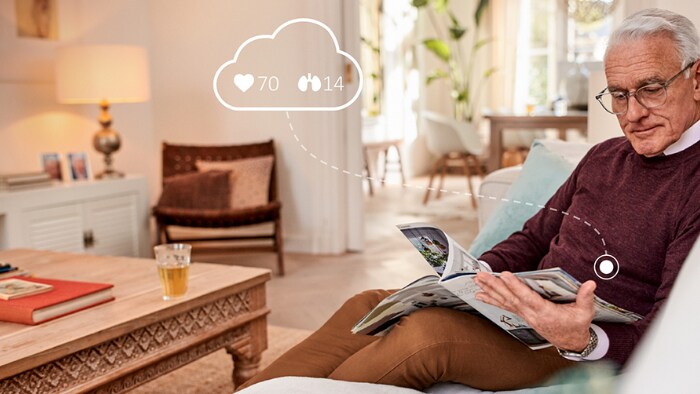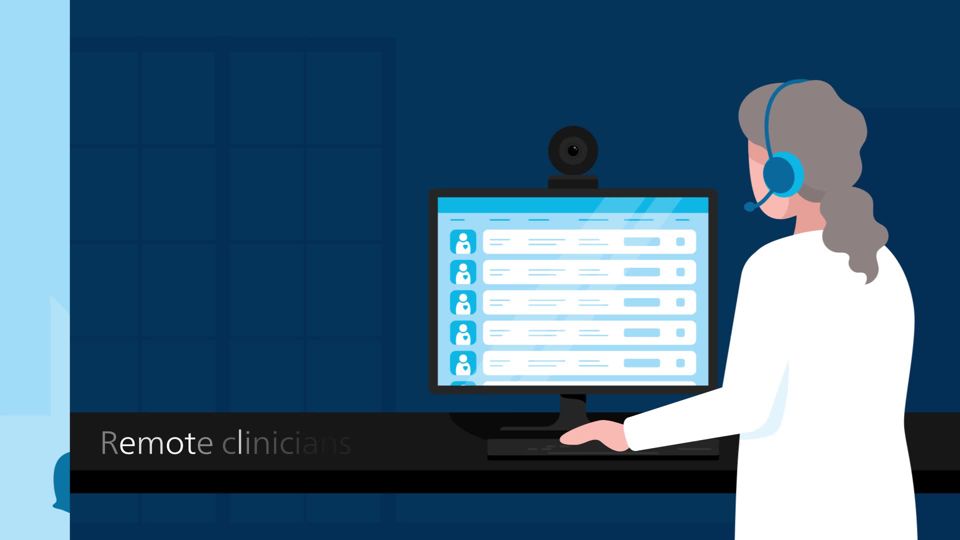How technology can improve the patient healthcare experience
Jun 13, 2022 - Reading time 7-9 minutes
While we’re a long way from robots running human health services, the internet of things (IoT) has the capability to transform the patient healthcare experience – for good. The new post-COVID reality presents an ideal opportunity for healthcare services to implement technology in a way that places patients front and centre of their health journeys. Great strides have been made, but there is still room for improvement. As KPMG’s Connected Health: The new reality for healthcare survey (1) discovered, 80% of healthcare leaders listed a customer-centric strategy as a high priority, but only 10% believed they were consistently exceeding patient expectations. Furthermore, digital barriers, such as difficulties sharing patient data and analytics, were cited as the most significant gaps.
Connections improve the patient healthcare experience
From preventative health to critical care services, these tools can facilitate a seamless, patient-centred health experience across the care continuum and support the healthcare industry’s transition to a value-based care model.
By enabling devices and systems to connect and share data, the IoT facilitates a 360-degree view of a patient’s health, allowing clinicians to make faster decisions. The ability of technologies such as artificial intelligence (AI) and machine learning to derive insights from data offers significant potential for improving patient care.
How technology supports the patient healthcare experience
For patients, healthcare technologies allow people to enjoy greater access to quality healthcare services delivered in alignment with their needs and preferences. Healthcare technology allows patients to:
While its name may imply otherwise, the IoT’s real power lies in its ability to help people. There are few, if any, places where this is more evident than in healthcare.

The West Moreton MeCare initiative offers a good example. In this program – a partnership between Philips and West Moreton Health in Queensland – patients living with challenging health conditions use remote monitoring to measure and record health targets (such as blood pressure) and speak with a nurse each day, all from the comfort of home. This gave patients greater control over their health and facilitate early intervention from practitioners (such as GPs or nurses) when needed. This patient-centred approach saw a 35% drop in potentially preventable hospitalisations, while patients reported improved confidence and mental health. The flexibility of this care delivery model allowed West Moreton Health to scale the program to support COVID-19 patients recovering at home, reducing demand for hospital services and mitigating the risk of spread. As of August 2021, the program has expanded to include mental health virtual care for patients with borderline personality disorder. On the other side of Australia, Philips is partnering with East Metropolitan Health Service in Western Australia to deliver a care model designed to enhance the patient experience and improve health outcomes, while lowering care costs and improving the work life of care providers. Based at Royal Perth Hospital, the Clinical Command Centre solution oversees inpatients in step down units and higher acuity wards. It uses machine learning and predictive analytics to predict patient deterioration and prioritise patients most in need of intervention, helping to reduce length of stay, complications, avoidable transfers, and mortality. Studies have shown this technology leads to improved patient experience and outcomes including:
How technology assists clinicians and healthcare leaders
Technology can also offer insights into operational performance and identify issues before they escalate, allowing healthcare providers to optimise workflows, continuity of care, and cost efficiency. For healthcare leaders and policy makers, technology can connect health networks and provide insights that foster evidence-based and data-driven strategy and policy making. For example, data analysis can identify the need for increased investment or resources across different communities.
For clinicians, the IoT enables real-time and longitudinal data capturing, along with integration of data from various medical devices. AI and machine learning can transform this data into useful insights which, when combined with clinical knowledge, facilitate decision makingn.
Making digital healthcare mainstream
As KPMG note (6), successful digital transformation requires several critical capabilities including responsive supply chains and operations, digitally-enabled technology architecture, and an integrated partner and alliance ecosystem.
Digital transformation is top of mind for many healthcare leaders as they seek to build resilient and future-proof healthcare systems. According to Accenture’s Digital Health Technology Vision 2021 report (5), technology is driving an “accelerated exponential transformation” that is reshaping industries and the human experience. They urge the healthcare industry to become skillful at change and “recognize there is no leadership without technology leadership”.

Australia has the technology and capabilities to enable a digital healthcare future. Our health system can take a leading role in overcoming barriers and turning pockets of digital innovation into a sustained and integrated scheme. This can be assisted by:
At Philips, we believe the future of digital health will be built in collaborative ecosystems, centered around people and driven by partnerships.
Patient experience at the heart of healthcare innovation
Meanwhile, emerging technologies like AI and machine learning will support the practitioner experience. Their ability to transform raw data into actionable insights can help practitioners make informed health decisions and therefore deliver informed treatments, leading to better health outcomes. Increased investment and stakeholder engagement can ensure Australia’s healthcare potential is realised, and the future of care delivers the outcomes both patients and practitioners seek. At Philips, we’re committed to developing solutions that improve the patient experience and give healthcare providers access to critical insights to guide clinical decision making.
As partnerships coalesce into networks and new technologies are increasingly integrated into healthcare, patients can expect a fundamental shift in the healthcare experience. Technologies such as remote monitoring will facilitate an enhanced experience by enabling patients to receive care at a time and place that suits them, while fostering better outcomes through early recognition of warning signs and faster access to interventions.
References 1. https://assets.kpmg/content/dam/kpmg/au/pdf/2020/connected-health-the-new-reality-for-healthcare-au.pdf
2. Lilly CM, et al. A Multi-center Study of ICU Telemedicine Reengineering of Adult Critical Care. CHEST. 2014; 145(3): 500-7.
3. Lilly CM, et al. Hospital Mortality, Length of Stay and Preventable Complications Among Critically Ill Patients Before and After Tele-ICU Reengineering of Critical Care Processes. JAMA. June 2011; 305(21) 2175-83.
4. Impact of an Intensive Care Unit Telemedicine Program on a Rural Health Care System. Zawada, et al. Postgrad Med J, 2009; 121(3):160-170.
5. https://www.accenture.com/_acnmedia/PDF-156/Accenture-Digital-Health-Tech-Vision-2021.pdf
6. https://assets.kpmg/content/dam/kpmg/au/pdf/2020/connected-health-the-new-reality-for-healthcare-au.pdf
Stay up to date and subscribe
Sign up to stay informed and receive information on healthcare innovation, straight to your inbox





